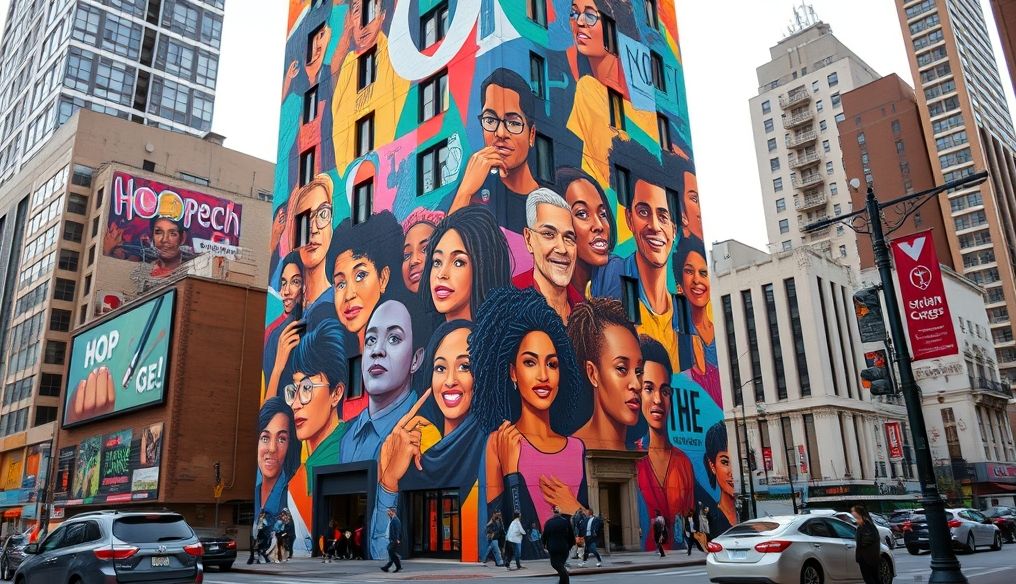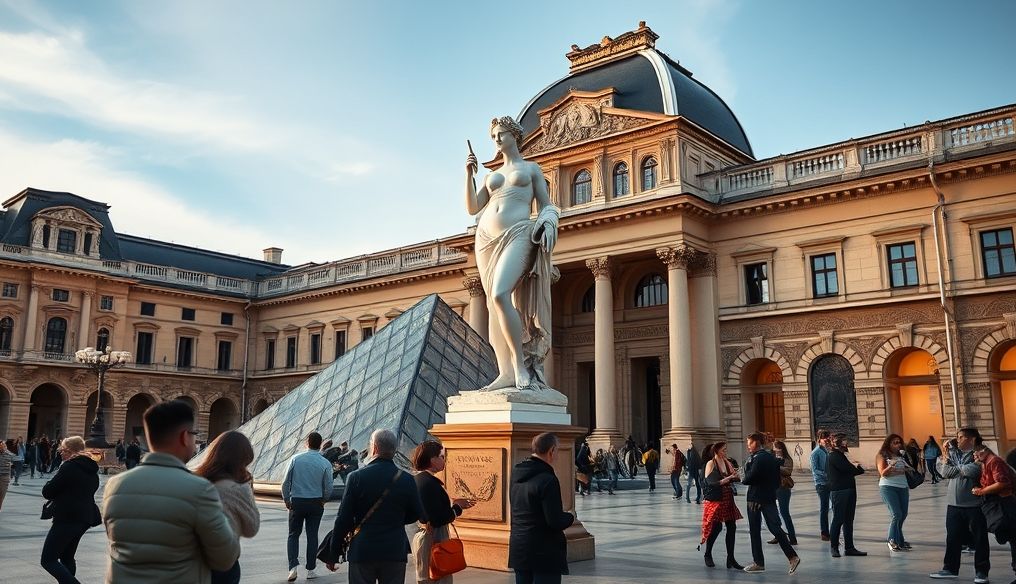Introduction: Street Art - Between Vandalism and Creativity
Street art, also known as graffiti, is a form of artistic expression that appears in public spaces. It often includes drawings, writings, and inscriptions executed on walls, vehicles, and other surfaces in cities. This type of art sparks a wide debate about whether it is considered vandalism or a legitimate form of creativity. Opinions range from considering it a crime and defacement of public property to considering it a means of self-expression, adding aesthetics to urban areas, and raising social and political issues.
What is Street Art (Graffiti)?
Street art is a broad term that encompasses a variety of artistic styles and techniques executed in public spaces. It can include:
- Graffiti: Writing or drawing on walls using spray paint.
- Stickers: Printed designs that are glued to surfaces.
- Stencils: Using templates to create repetitive drawings.
- Sculptures: Three-dimensional art installations in public spaces.
- Wheatpasting: Using wheatpaste to adhere artwork to walls.
Historically, street art dates back to ancient times, where drawings and inscriptions appeared on the walls of caves and temples. However, graffiti gained widespread popularity in the 1970s and 1980s in New York City, where young people used it to express their opinions and feelings in the face of difficult social and economic conditions.
Arguments Supporting Street Art as Creativity
Supporters argue that street art is a legitimate form of artistic expression and has many benefits:
- Self-Expression: Street art provides a platform for individuals to express their thoughts, feelings, and opinions in a creative and free manner.
- Aesthetics to Urban Areas: Street art can transform gray and dull walls into colorful and cheerful works of art, improving the overall appearance of cities.
- Raising Social and Political Issues: Many street artists use their art as a means of expressing their opinions on important social and political issues, such as poverty, racism, and injustice.
- Encouraging Dialogue and Reflection: Street art can spark dialogue and reflection on the issues raised, helping to increase public awareness and promote social change.
- Supporting Tourism and the Local Economy: Street art can attract tourists to cities, boosting the local economy and supporting local artists.
Examples of Famous Artists
There are many famous street artists who have gained international recognition for their innovative and impactful works, such as:
- Banksy: An anonymous British artist, known for his satirical and political works that appear in public spaces around the world.
- Shepard Fairey: An American artist, known for his famous "Obey" design, which aims to provoke critical thinking about power and consumption.
- Os Gemeos: A Brazilian artist, known for his colorful and playful drawings that depict cartoon characters and animals.
Arguments Supporting Street Art as Vandalism
Opponents argue that street art is a form of illegal vandalism and has many negative effects:
- Defacement of Public and Private Property: Street art is considered a defacement of public and private property, reducing its value and affecting the overall appearance of cities.
- Cleaning and Removal Costs: Governments and private companies incur significant costs to clean and remove unwanted street art.
- Encouraging Crime: Some believe that street art encourages crime and disorder, creating an unsafe environment in cities.
- Violation of Property Rights: Street art is considered a violation of property rights, as it is executed without the permission of property owners.
- Negative Impact on Tourism: Some believe that street art distorts the aesthetic appearance of cities, negatively affecting tourism.
Laws and Penalties
Laws and penalties related to street art vary from country to country and city to city. In some places, street art is considered a crime punishable by fines or even imprisonment. In other places, street art is tolerated if it is executed in designated areas and with the permission of local authorities.
Legal and Ethical Stance
The legal and ethical stance towards street art depends on several factors, including:
- Place of Execution: Street art is considered more acceptable if it is executed in designated areas or with the permission of property owners.
- Content: Street art is considered more controversial if it contains offensive or inflammatory messages.
- Style: Street art is considered more appreciated if it is characterized by artistic quality and creativity.
Ethically, some believe that street art is a right of expression, while others believe that it should be subject to rules and regulations to protect public and private property.
How Can We Strike a Balance Between Creativity and Respect for the Law?
To strike a balance between creativity and respect for the law, several steps can be taken:
- Designating Dedicated Areas for Street Art: Local governments can designate specific areas in cities where artists can practice their art freely without facing legal accountability.
- Launching Community Art Initiatives: Governments and non-governmental organizations can launch community art initiatives that support street artists and provide them with opportunities to display their work in a legal and organized manner.
- Raising Awareness of the Importance of Art and Culture: Schools and educational institutions can raise awareness of the importance of art and culture, encouraging students to appreciate street art and understand its role in society.
- Collaboration Between Artists and Property Owners: Artists and property owners can collaborate to create works of art that add aesthetics to buildings and urban areas.
- Establishing Clear and Fair Laws: Governments should establish clear and fair laws regulating street art, balancing the rights of artists and the rights of property owners.
Street Art as a Tool for Social Change
Street art can be a powerful tool for social change by:
- Raising Awareness of Social Issues: Street art can highlight important social issues, such as poverty, racism, and climate change, and call for change.
- Inspiring Hope and Optimism: Street art can inspire hope and optimism in communities facing difficulties and challenges.
- Promoting Unity and Solidarity: Street art can promote unity and solidarity among community members, creating a sense of belonging and shared identity.
- Encouraging Civic Engagement: Street art can encourage individuals to participate in civic engagement and express their opinions and positions on issues that concern them.
The Future of Street Art
Street art is expected to continue to evolve and spread in the future, with the emergence of new technologies and artistic styles. The future may see increased collaboration between artists, governments, and property owners, leading to the creation of more organized and accepted works of art. Street art may also play a greater role in promoting tourism and boosting the local economy.
Conclusion: The Ongoing Debate
The debate continues as to whether street art is considered vandalism or creativity. The answer depends on personal viewpoints and values, as well as the social and legal context. However, it cannot be denied that street art is a powerful and impactful form of artistic expression that can play an important role in society. By striking a balance between creativity and respect for the law, we can harness the benefits of street art while minimizing its negative effects.




